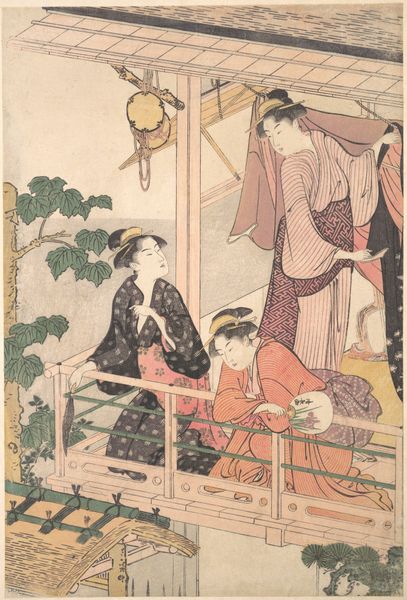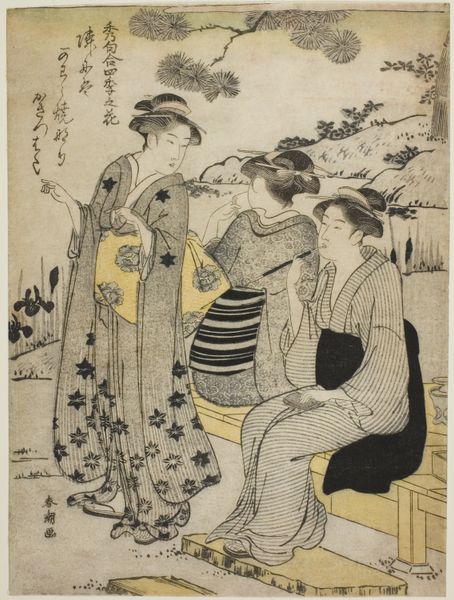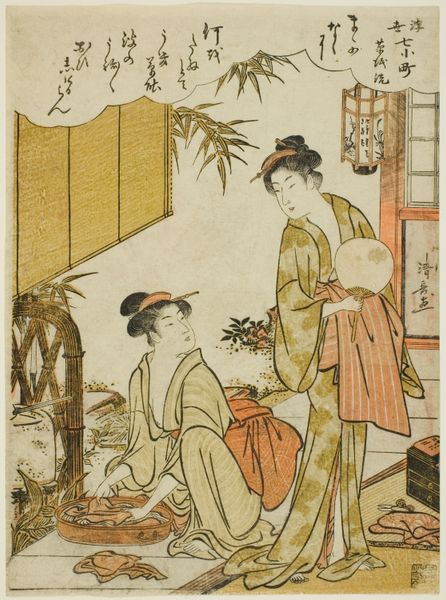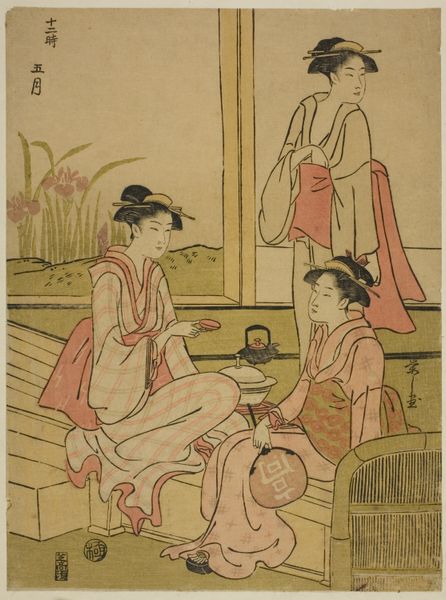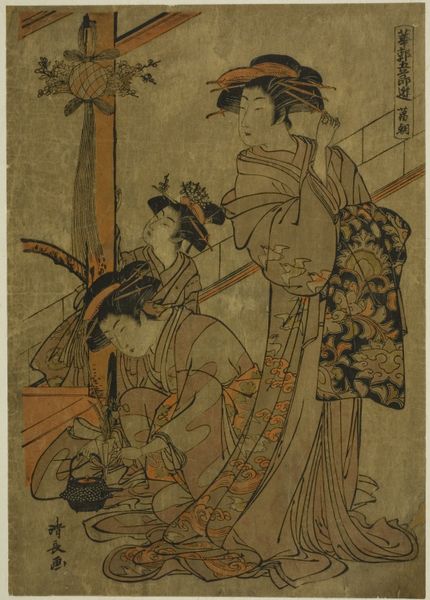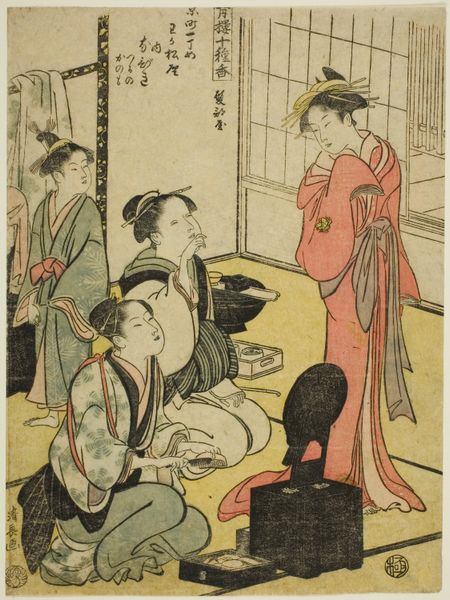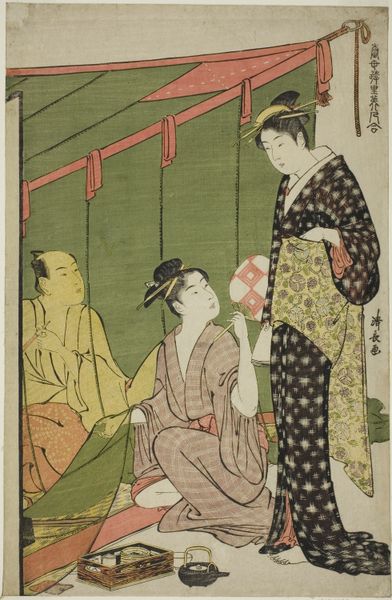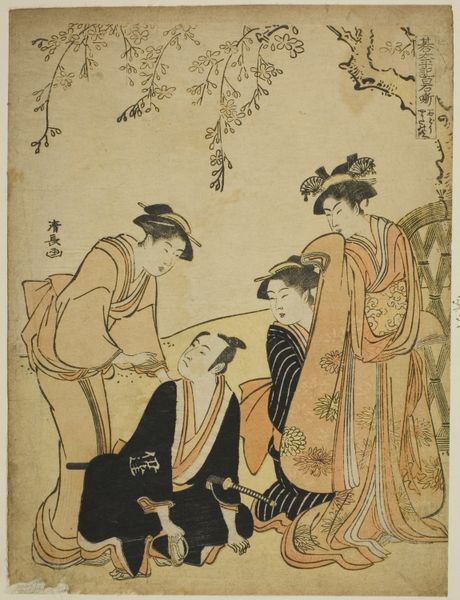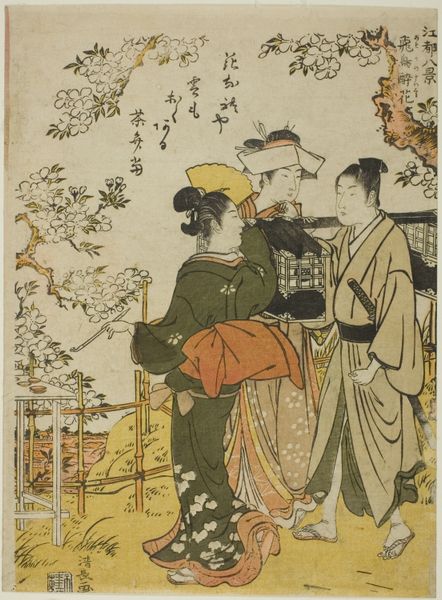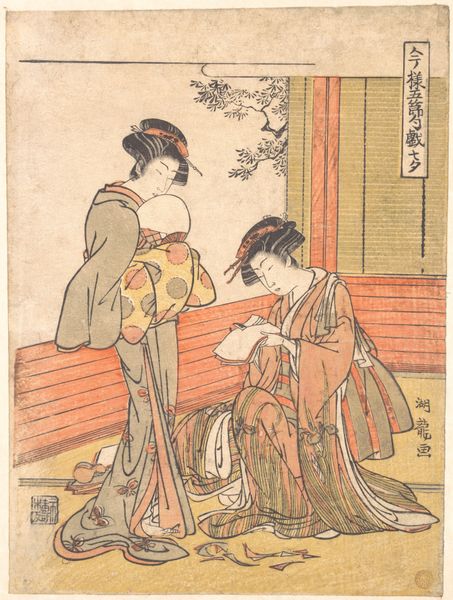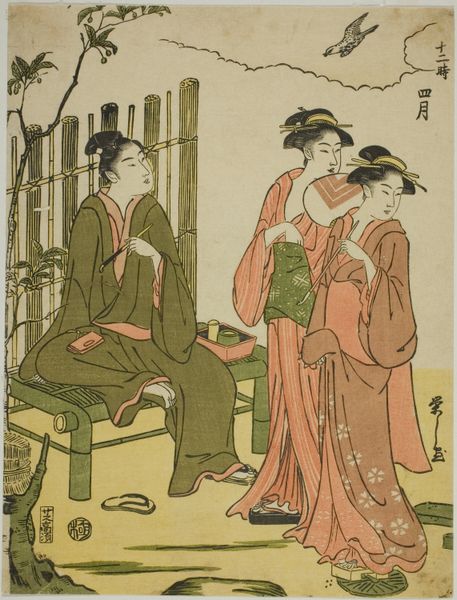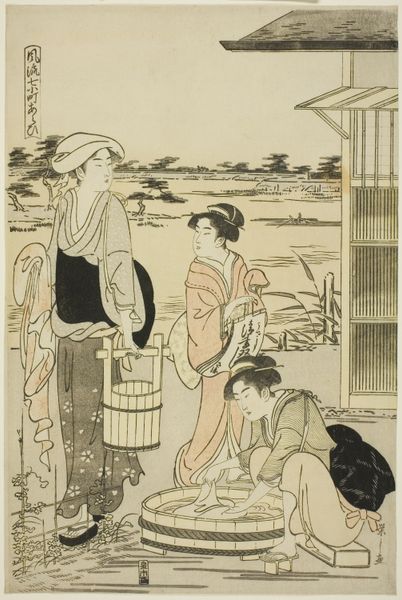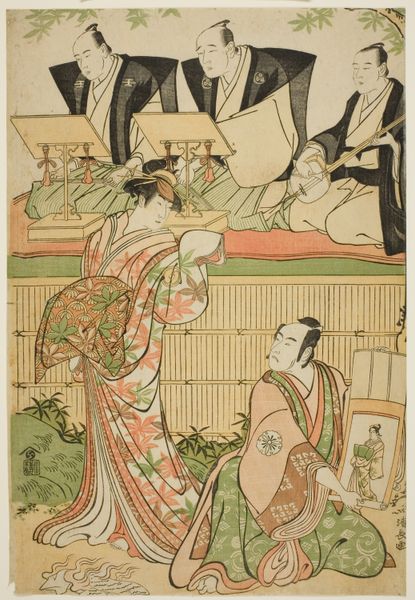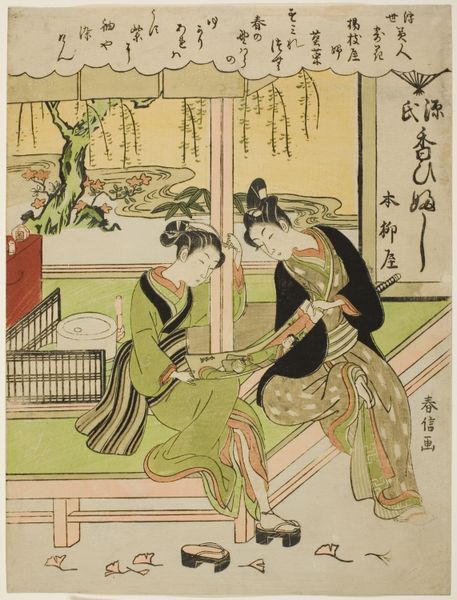
drawing, print, ink, woodblock-print
#
drawing
#
ink drawing
#
ink painting
# print
#
asian-art
#
ukiyo-e
#
figuration
#
ink
#
woodblock-print
#
genre-painting
Dimensions: 14 3/8 × 9 3/4 in. (36.5 × 24.7 cm) (image, sheet, ōban)
Copyright: Public Domain
Curator: Oh, there's an immediate sense of the everyday made sacred in this image. Editor: Precisely! What you’re seeing is "Ebisu God Cooking a Red Snapper," a woodblock print created circa the 19th century by Kitagawa Utamaro. This piece currently resides at the Minneapolis Institute of Art. Curator: A red snapper! Visually, it immediately grounds the composition. Its scales seem almost magnified, demanding attention, yet there is a quiet drama as we notice how Ebisu handles the fish. Is there significance to that particular type of fish? Editor: The red snapper, or tai, carries great cultural weight. In Japan, it’s associated with celebration and good fortune. Often served at festivals and weddings, it's more than just food; it's a visual promise of happiness and abundance. Also, think of Ebisu; what might his presence bring in contrast to contemporary work? Curator: In today’s environment, Ebisu’s dedication and focus, rendered in the woodblock’s decisive lines, resonate powerfully. He’s a reminder that even seemingly mundane tasks, when infused with intention, become acts of profound significance, echoing labor issues around the world. But what of the two women, Editor? What about the woman standing with the bowl? Editor: That is a potent juxtaposition! They contribute to the atmosphere of plenty and service – important ideals within Edo-period urban culture. Each element seems precisely positioned, reflecting a careful balance of tradition, class, and spiritual undertones, speaking to an intricate societal network of food and gender. What a sharp, poignant criticism if viewed through a modern lens! Curator: It makes one reflect on how values—economic, gendered—shape our present perceptions of tradition, especially in an age of fast-casual, to-go living. It certainly provokes contemplation on labor ethics. Editor: Indeed. So much in one seemingly simple composition. What’s most engaging, I feel, is the artist’s delicate touch which leaves so much for each viewer to add to this ever-unfolding cultural tableau.
Comments
No comments
Be the first to comment and join the conversation on the ultimate creative platform.
